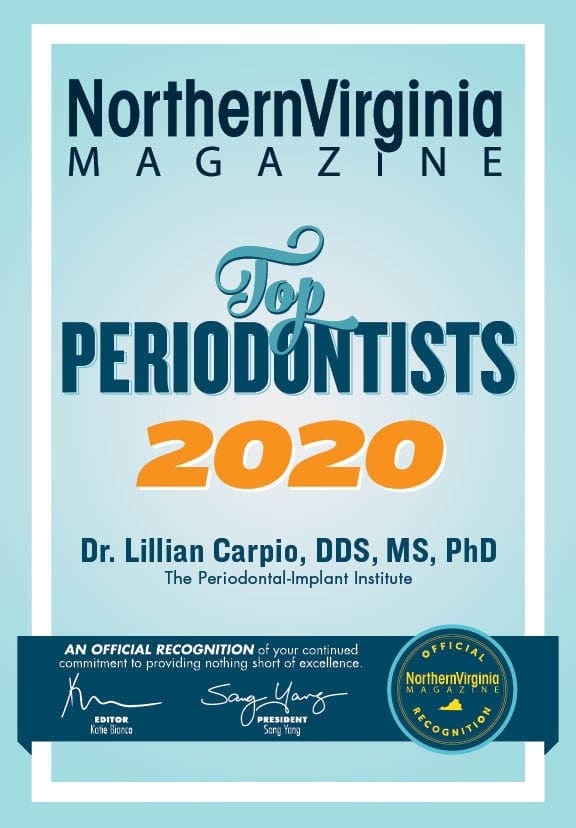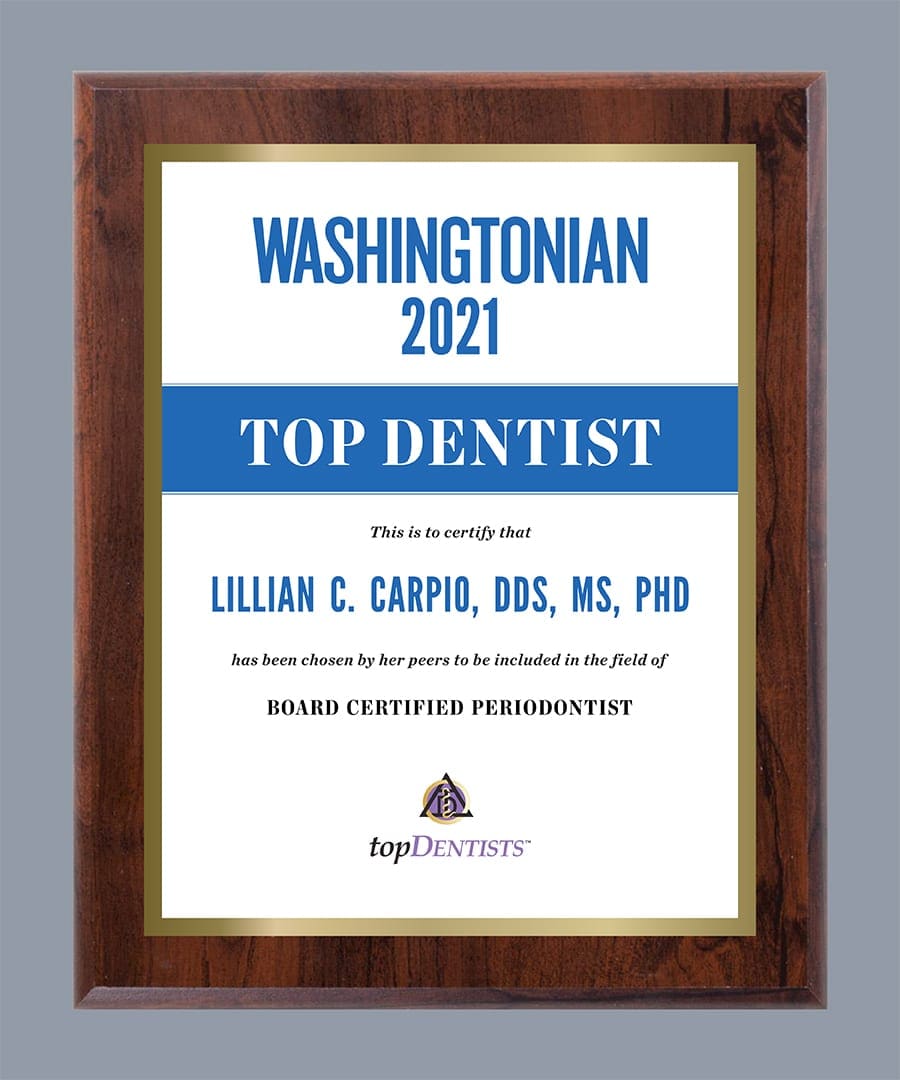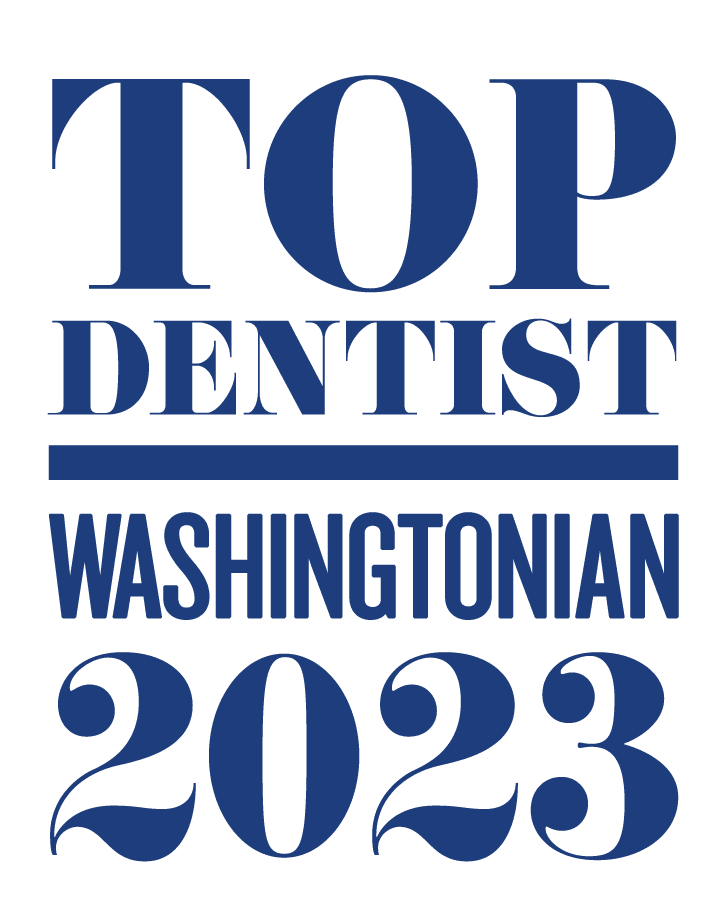
Procedures
Below please find information on procedures performed by Dr. Lillian Carpio at The Periodontal-Implant Institute. You can also find helpful links for additional information.
- Prophylaxis
- Scaling and Root Planing
- Periodontal Maintenance
- Oral Hygiene
- Oral Hygiene
- Oral Cancer Screening
- Smoking Cessation Counseling
- Pocket Elimination Surgery: Open Flap Debridement and Osseous Surgery
- Crown Lengthening Procedure
- Periodontal Plastic Procedures
- Correction of Gummy Smile or Uneven Gingival Contour
- Soft Tissue Grafting for Exposed Roots/Gum Recession
- Periodontal Regenerative Surgery and Bone Grafting
- Ridge Augmentation
- Sinus Augmentation
- Dental Implants and Implant Dentistry
Patient Comfort
At the Periodontal-Implant Institute, we understand make every effort to ensure the maximum comfort of our patients and minimize potential discomforts. The majority of our patients have reported minimal to no pain in their experience while receiving treatment at our office. To ensure patient comfort, we provide options of pre and post-operative medications for pain control.
Patient’s anxiety can be associated with injections and the use of dental anesthesia. Dr. Carpio takes every measure to ensure that anesthetic injections administered to our patients are performed so that the patients feel little to no pain.
We understand that some patients are going to will be more comfortable with deeper levels of sedation. If required, the Periodontal-Implant Institute can contact Horizon Anesthesia to help our patients arrange for this service. Dr. Carpio’s patients have rarely required the need to use/obtain outside sedation services.
Non-Surgical Periodontal Therapy
The guidelines for treatment given by the American Academy of Periodontology, stress that periodontal health should be achieved in the least invasive and most cost-effective manner. The initial phase of treatment is accomplished through non-surgical procedures, including scaling and root planing (thorough cleaning of the affected root surfaces to remove plaque and calculus [tartar] from deep periodontal pockets and to smooth the tooth root to remove bacterial toxins), followed by adjunctive therapy such as local delivery of antimicrobials and host modulation.
The extent or need of surgical periodontal therapy can be reduced or eliminated after scaling and root planning. Many patients do not require any further active periodontal treatment. However, the majority of patients will require ongoing maintenance therapy to sustain health. When non-surgical therapy does not achieve periodontal health, surgery is indicated to restore periodontal health, and anatomy damaged by periodontal diseases.
Prophylaxis
Prophylaxis is a Regular Standard Cleaning. The American Dental Association describes a prophylaxis as scaling and polishing procedures that remove coronal plaque, calculus and stains. Scaling refers to the use of a dental instrument to scrape off deposits from the surface of the teeth. An electric device called an ultrasonic or sonic scaler may also be used. This scaling is performed on the part of the tooth that is exposed above the gum line; in other words, on the coronal or crown of the tooth. Calculus is also known as tartar, and is a hard mineralized deposit, somewhat like cement, that is formed from the mineralization of plaque in the mouth and the minerals in an individual’s saliva. Plaque is a soft, sticky substance that forms on teeth, regardless of what types of foods are eaten, which is composed of bacteria and bacterial by-products.
A regular cleaning or prophylaxis is recommended for persons who do not have any bone loss, periodontal disease or infection around their teeth. There should also be no bleeding, mobility of teeth, receded areas where the gums have pulled away from the teeth, or gaps where spaces around the roots of the teeth are exposed. In other words, the mouth should be healthy with no gum problems.
Scaling and Root Planing
Scaling and root planning, removes bacteria and their toxins, calculus, and deposits from the root surfaces. Scaling is required on the full length of the root surface, down to where the root, gum and bone meet. Scaling and root planning is typically the first step in treating periodontal disease.
This procedure involves the thorough cleaning and debridement of the affected root surfaces. The goal of treatment is to remove plaque, calculus and bacteria from deep periodontal pockets. Smoothing out the roots helps remove bacterial toxins, and allows for the tissues to re-attach and heal. This results in a reduction in the “pockets” that develop as a result of the periodontal infection.
Periodontal Maintenance
If you have periodontal disease you may require scaling and root planning to remove diseased deposits from the roots of your teeth. Other treatments including surgery, may also be required. Once the disease process is under control, a regular cleaning is not appropriate anymore. Instead, you will require on-going care procedures known as periodontal maintenance to keep your mouth healthy and most importantly, prevent recurrence of the disease or infection. The American Dental Association describes Periodontal Maintenance as a procedure for patients who have previously been treated for periodontal disease. Previous treatment for periodontal disease refers to a patient that has had periodontal surgery or root planning in the past.
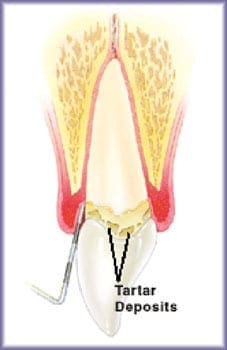
The frequency of periodontal maintenance visits is determined by Dr. Carpio and your dentist. It should continue at varying intervals, and could alternate between your dentist’s office and that of Dr. Carpio. A periodontal maintenance procedure is not the same treatment as a regular cleaning even though a hygienist may perform both services. A periodontal maintenance procedure, is also known as supportive periodontal therapy.
Oral Hygiene Education
At the Periodontal-Implant Institute, we provide oral hygiene instructions to patients of all ages. We tailor the instructions to each individual patient’s needs. We review measures to improve brushing and flossing techniques, and to emphasize the importance of brushing and flossing regularly. It is sometimes more important to check “how we brush and floss our teeth” than “what type of tooth brush or floss we use”. For instance, brushing or flossing too aggressively can destroy the gum tissue and create gum recession. With proper brushing and hygiene measures, gingival recession and periodontal disease can be monitored or prevented. The key to a healthy mouth and quality care is PREVENTION. We will teach our patients appropriate care techniques, and will design a customized schedule for each patient to meet his or her needs.
Pharmacotherapeutics
There are instances where Dr. Carpio will recommend the use of antibiotics to control the periodontal infection, via direct application of the antibiotic in the site of the pocket, or orally to help in fending off the periodontal infection. Such techniques can increase the effectiveness of the periodontal treatment, especially in areas where an individual is experiencing persistent and/or severe periodontal infection.
Oral Cancer Screening
A complete periodontal examination routinely includes an oral cancer screening. An examination of the entire mouth on a regular basis is essential in the early detection of cancerous and pre-cancerous conditions. You may have a very small, but dangerous, oral spot or sore and not be aware of it.
During the screening, the inside of your mouth and tongue are carefully examined. A white or red spot or a small painless sore might appear in the mouth or tongue of a patient. In most cases, these are harmless, but some are not. Harmful oral spots or sores often look identical to those that are harmless, but testing can tell them apart. If you have a sore with a likely cause, Dr. Carpio may treat it and ask you to return for a re-examination. A spot or sore that looks harmless and does not have a clear cause should be monitored.
At Dr. Carpio’s office, you will receive a complete periodontal evaluation. Included in that evaluation, is an oral cancer screening. Dr. Carpio will make note of any lesion detected during your examination, and will monitor for any sign associated with oral cancer. If necessary, she will recommend a biopsy. The oral cancer screening is completely painless.
For more information on Oral Cancer, read this from the American Dental Association.
Smoking Cessation Counseling
Smoking is clearly bad for you. It is the cause of many health problems and diseases such as lung cancer and emphysema. Smoking is also a risk factor for developing periodontal disease. Heavy smokers are more than 4 times more likely to loose bone around their teeth compared to non-smokers. Smoking affects the immune system and reduces our ability to fight an infection, and therefore affects healing. Smoking also affects the success of dental implants. Dr. Carpio will provide you with smoking cessation counseling, and give you some tips to help you quit smoking.
For information on smoking cessation please visit https://www.smokefree.gov/.
Surgical Periodontal Therapy
Periodontal surgery is necessary when it is determined that the tissues around your teeth are unhealthy and cannot be repaired with non-surgical treatment. Following are various types of surgical treatments recommended for patients suffering from periodontal disease.
Pocket Elimination Surgery: Open Flap Debridement and
Osseous Surgery
Dr. Carpio is an expert in the surgical techniques needed to reduce pocket depth and remove bacterial toxins from the pockets. When supporting tissue and bone is destroyed, “pockets” form around the teeth. Your bone and gum tissue should fit tightly around your teeth. When you have periodontal disease, this supporting tissue and bone is destroyed, forming “pockets” around the teeth.
Over time, these pockets become deeper, providing a larger space for bacteria to live. As bacteria develop around the teeth, they can accumulate and advance under the gum tissue. These deep pockets collect even more bacteria, resulting in further bone and tissue loss. Eventually, if too much bone is lost, the teeth will need to be extracted.
Your periodontist has measured the depth of your pocket(s). A pocket reduction procedure has been recommended because you have pockets that are too deep to clean with daily at-home oral hygiene and a professional care routine.
By eliminating existing bacteria, the pocket elimination surgery helps prevent further damage that may be caused by periodontal disease progression. In this procedure, the patient’s gums are folded back for access to the problem area, and the bacteria can then be removed successfully (open flap debridement). In addition to the removal of harmful bacteria, the diseased root surfaces and areas that are irregularly shaped are smoothed out with scalers so that the potential for the return of bacteria is minimized. In some instances, the damaged bone around the teeth has become irregular as a result of the infection. In this case, the bone is re-contoured slightly, and irregular surfaces of the damaged bone are smoothed to limit any chance for the disease-causing bacteria to hide (osseous surgery). This allows the gum tissue to better reattach to healthy bone, and provide a healthier environment. At the completion of the procedure, the gum tissue is secured back into place and sutures are placed.
What are the benefits of this procedure?
Reducing pocket depth and eliminating existing bacteria are important to prevent damage caused by the progression of periodontal disease and to help maintain a healthy smile. Eliminating bacteria alone may not be sufficient to prevent disease recurrence. Deeper pockets are more difficult to clean and maintain, so it is important to reduce them. Reduced pockets and a combination of daily oral hygiene and professional maintenance care increase your chances of keeping your natural teeth – and decrease the chance of serious health problems associated with periodontal disease.
Crown Lengthening Procedure
Crown lengthening surgery is necessary if an individual requires the fabrication of a crown by his/her dentist, but there is insufficient healthy tooth surface exposed above the gum line to allow the dentist to properly fabricate the crown. Therefore, crown lengthening is required in order to make it possible for the crown to be placed appropriately. Esthetic crown lengthening is a procedure performed to improve what is referred to as a “gummy smile.” The teeth then get a more even appearance, and esthetics is markedly improved. During the dental crown lengthening procedure, excess gum and bone tissue is reshaped to expose more of the natural tooth. This can be done to one tooth, to even your gum line, or to several teeth to expose a natural, broad smile. The patient’s natural teeth are exposed in a more aesthetically pleasing way. The teeth may actually be the proper lengths, but they are covered with too much gum tissue.

Periodontal Plastic Procedures
Periodontal plastic procedures can improve your smile and boost your confidence by improving your smile. This type of surgery has become more popular especially now that more Americans are living longer and aging more gracefully. Periodontal plastic surgery has also felt this trend as it has experienced a significant shift toward cosmetic-related surgery to help make smiles last a lifetime.
A recent poll of 253 consumers conducted by the American Academy of Periodontology found that 50 % consider the smile the first facial feature they notice, and 80 % are not happy with their smile. The respondents stated that they were seven times more likely to have periodontal, smile enhancement procedures, than face-lifts, and smile enhancement procedures outnumbered eyelid surgeries five to one.
Correction of Gummy Smile or Uneven Gingival Contour
If you feel your teeth look too short or your gums cover too much of some teeth while leaving the others the right length, then your gum line can be sculpted to give your new smile just the right look. Esthetic crown lengthening is recommended (see above).
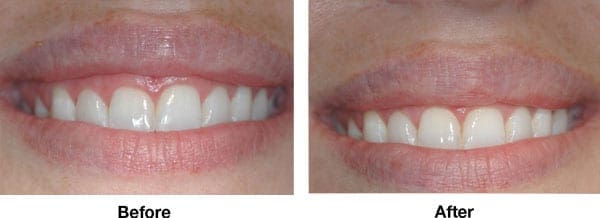
Soft Tissue Grafting for Exposed Roots/Gum Recession
Gum recession causes the tooth root to become exposed, which makes your teeth look long and can make you look older than you are. This recession can happen as a result of a variety of causes, including periodontal disease, and aggressive brushing or flossing. Whatever the reason, exposed roots are unappealing and can leave you at risk of developing cavities on your tooth root. Gum graft surgery and other root coverage procedures are designed to cover exposed roots, to reduce further gum recession and to protect vulnerable roots from decay.
Dr. Carpio is an expert in the treatment of root coverage. The surgery also reduces sensitivity issues and improves aesthetics in patients. Exposed root teeth not only appear longer and discolored, but the teeth are more prone to hot and cold sensitivity, and are at risk of developing root caries. With soft tissue grafting, soft tissue can be placed in the areas to cover over exposed roots of teeth thereby improving one’s appearance as well as minimizing issues with sensitivity. An immediate aesthetic improvement can be noted. During root coverage procedures, local anesthetic is provided.
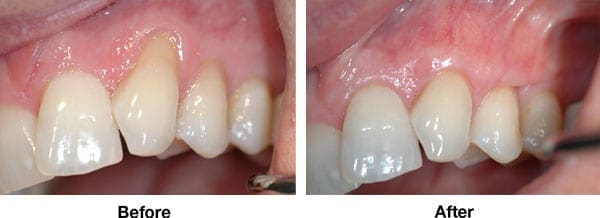
Periodontal Regenerative Surgery and Bone Grafting
Periodontal disease causes pockets around the teeth. This is due to destruction of the tissues surrounding the teeth as a result of the periodontal infection. Bone supporting the teeth is also deteriorated. After initial non-surgical therapy is completed, periodontal regenerative surgery can be performed to correct areas of bone destruction around the teeth.
open the area of the mouth directly over the section of jaw bone which requires bone grafting. The procedure is conducted in the gentlest fashion possible in a comfortable and secure environment.

Before Regeneration of Bone Defect & 1 Year After
Dr. Carpio may recommend a regenerative procedure when the bone supporting your teeth has been destroyed. These procedures can reverse some of the damage by regenerating lost bone and tissue.
During this procedure, the gum tissue is slightly separated from the tooth/bone to expose the bone defect. The first step is removal of the disease-causing bacteria. Membranes (filters) and bone grafts are used to promote healing by regenerating the bone and tissue lost to disease. There are many options to enhance support for your teeth and to restore your bone to a healthy level. Dr. Carpio will discuss your best options with you.
Ridge Augmentation
In some instances, after tooth loss, there can be collapse of the bone, and result in a concavity or indentation in the site where the tooth used to be. This happens because the jaw bone architecture reduces in size and recedes when it no longer is holding a tooth in place. Ridge augmentation can correct this problem by filling this defect and restoring the natural contour of the gums and bone that was lost when the tooth was removed.
Ridge augmentation and bone regenerative procedures can also be recommended prior to, or at the time of placing a dental implant. After a tooth extraction, there are sometimes sunken areas that appear in the patient’s gum line. Bone grafts are utilized at the time of the extraction, and inserted in the socket to fill and preserve the gum and bone contour that were there when the tooth was present.
As with other surgical procedures, local anesthetics are used to make the patient comfortable, then the defect site is exposed, and the defect is filled with the appropriate bone grafting material.
Sinus Augmentation
Sinus augmentation is a procedure performed to create sufficient bone height to accommodate a dental implant in the posterior maxillary bone. It is necessary in order to prepare a patient for future implant placement. Sinus Augmentation involves the act of raising the sinus floor and filling the space with a bone grafting material. This may be necessary in the area where the back teeth are located due to a lack of bone quantity and/or quality necessary for implants.
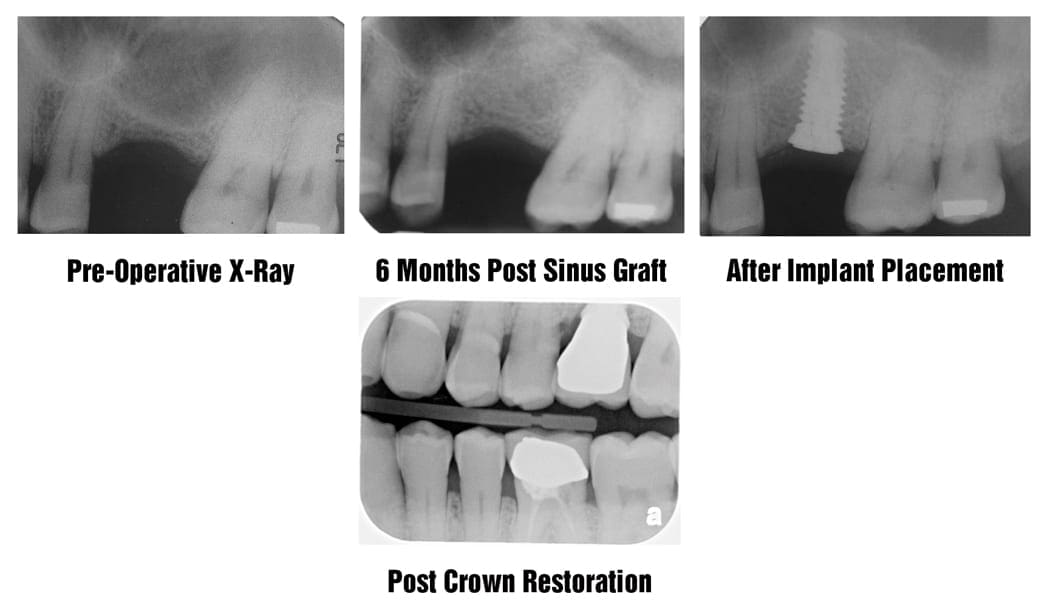
Dental Implants and Implant Dentistry
Dental Implants allow for patients to restore not only their smiles, but their ability to chew. Dental implants are a more natural looking option compared to dentures or bridges because implants look and feel just like your own teeth. They also allow you to speak and eat with comfort and confidence.
During this procedure, an artificial tooth root is placed into your jaw, and after a healing period, an artificial tooth is attached to the root.


